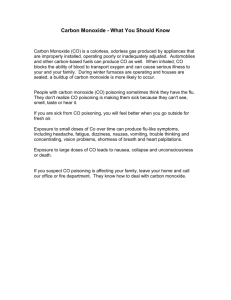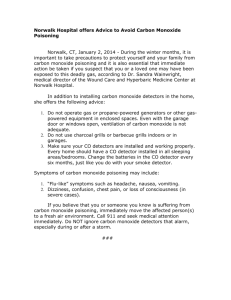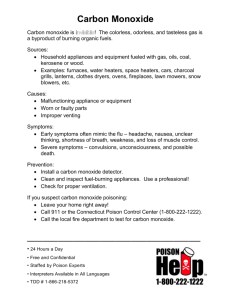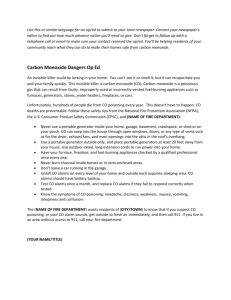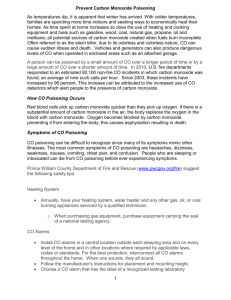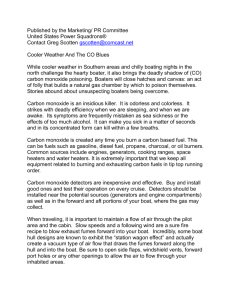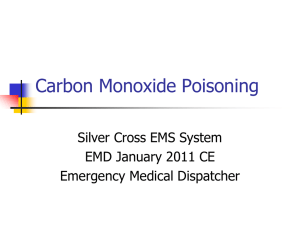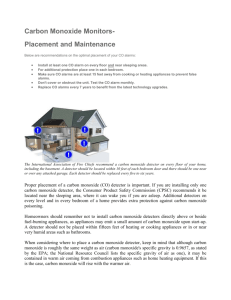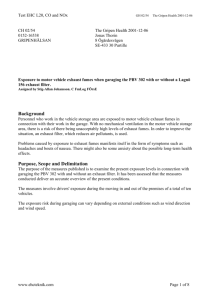Hazard Alert: Carbon Monoxide - Cortland County Health Department
advertisement
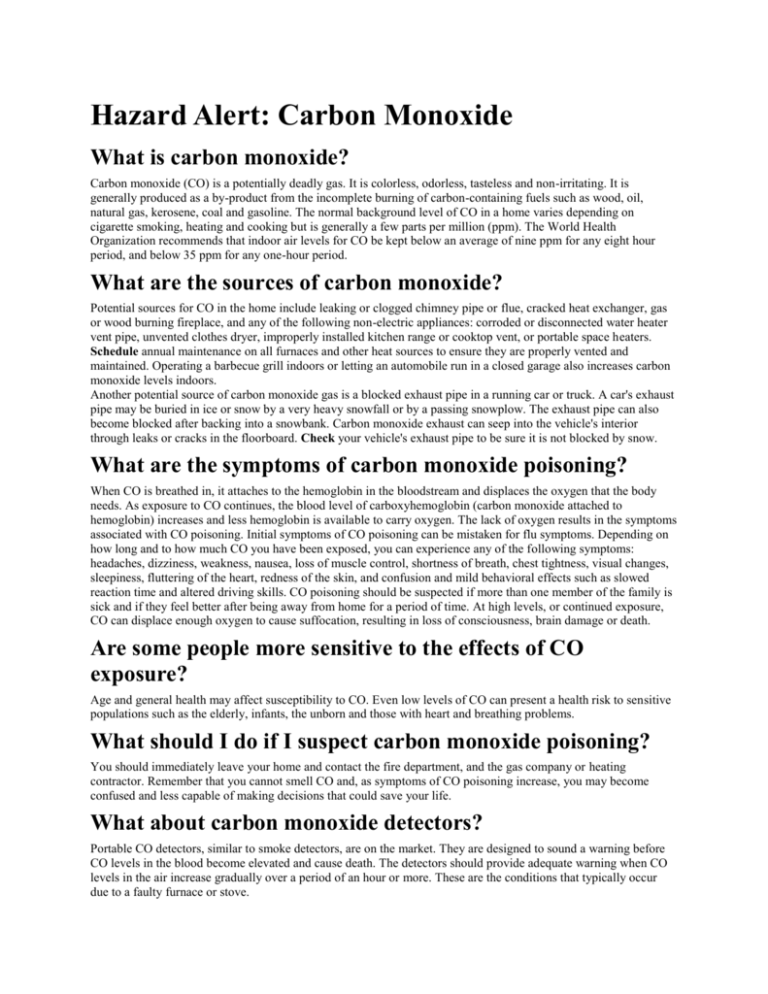
Hazard Alert: Carbon Monoxide What is carbon monoxide? Carbon monoxide (CO) is a potentially deadly gas. It is colorless, odorless, tasteless and non-irritating. It is generally produced as a by-product from the incomplete burning of carbon-containing fuels such as wood, oil, natural gas, kerosene, coal and gasoline. The normal background level of CO in a home varies depending on cigarette smoking, heating and cooking but is generally a few parts per million (ppm). The World Health Organization recommends that indoor air levels for CO be kept below an average of nine ppm for any eight hour period, and below 35 ppm for any one-hour period. What are the sources of carbon monoxide? Potential sources for CO in the home include leaking or clogged chimney pipe or flue, cracked heat exchanger, gas or wood burning fireplace, and any of the following non-electric appliances: corroded or disconnected water heater vent pipe, unvented clothes dryer, improperly installed kitchen range or cooktop vent, or portable space heaters. Schedule annual maintenance on all furnaces and other heat sources to ensure they are properly vented and maintained. Operating a barbecue grill indoors or letting an automobile run in a closed garage also increases carbon monoxide levels indoors. Another potential source of carbon monoxide gas is a blocked exhaust pipe in a running car or truck. A car's exhaust pipe may be buried in ice or snow by a very heavy snowfall or by a passing snowplow. The exhaust pipe can also become blocked after backing into a snowbank. Carbon monoxide exhaust can seep into the vehicle's interior through leaks or cracks in the floorboard. Check your vehicle's exhaust pipe to be sure it is not blocked by snow. What are the symptoms of carbon monoxide poisoning? When CO is breathed in, it attaches to the hemoglobin in the bloodstream and displaces the oxygen that the body needs. As exposure to CO continues, the blood level of carboxyhemoglobin (carbon monoxide attached to hemoglobin) increases and less hemoglobin is available to carry oxygen. The lack of oxygen results in the symptoms associated with CO poisoning. Initial symptoms of CO poisoning can be mistaken for flu symptoms. Depending on how long and to how much CO you have been exposed, you can experience any of the following symptoms: headaches, dizziness, weakness, nausea, loss of muscle control, shortness of breath, chest tightness, visual changes, sleepiness, fluttering of the heart, redness of the skin, and confusion and mild behavioral effects such as slowed reaction time and altered driving skills. CO poisoning should be suspected if more than one member of the family is sick and if they feel better after being away from home for a period of time. At high levels, or continued exposure, CO can displace enough oxygen to cause suffocation, resulting in loss of consciousness, brain damage or death. Are some people more sensitive to the effects of CO exposure? Age and general health may affect susceptibility to CO. Even low levels of CO can present a health risk to sensitive populations such as the elderly, infants, the unborn and those with heart and breathing problems. What should I do if I suspect carbon monoxide poisoning? You should immediately leave your home and contact the fire department, and the gas company or heating contractor. Remember that you cannot smell CO and, as symptoms of CO poisoning increase, you may become confused and less capable of making decisions that could save your life. What about carbon monoxide detectors? Portable CO detectors, similar to smoke detectors, are on the market. They are designed to sound a warning before CO levels in the blood become elevated and cause death. The detectors should provide adequate warning when CO levels in the air increase gradually over a period of an hour or more. These are the conditions that typically occur due to a faulty furnace or stove. A carbon monoxide detector is not a substitute for regular maintenance of CO sources. Fire departments recommend that CO detectors be placed in the center of the ceiling on the sleeping level and in the furnace area. For further assistance, please check with your local fire department.
